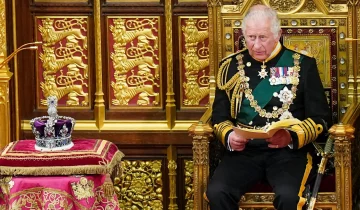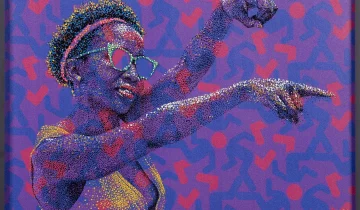The African Art Diaspora: Preserving Heritage Across Borders
In the grand tapestry of human history, the African Art Diaspora weaves a vibrant and intricate pattern of cultural identity, showcasing the resilience and creativity of a continent. Like a thousand shards of a shattered mirror, the African diaspora has scattered its artistic riches across the globe, reflecting the myriad hues of a people who have faced the trials of colonialism, migration, and globalization. Yet, despite these challenges, African artists and their supporters have found ways to maintain cultural connections and preserve their heritage through artistic expression. This journal explores the genesis of the African Art Diaspora, the factors contributing to its growth, the efforts made to preserve heritage through artistic expression, and the challenges that lie ahead.
Historical context of the African Art Diaspora
To understand the African Art Diaspora, one must venture back to the dark days of colonialism, when the continent’s resources, both human and material, were plundered and exploited by foreign powers. Like a double-edged sword, colonialism introduced new artistic techniques and materials to African artists while simultaneously erasing and repressing their indigenous art forms. The repercussions of this cultural genocide reverberate to this day, with many African artists struggling to reclaim their artistic heritage.
The African Art Diaspora’s roots also extend to the mass migrations of Africans to other continents, driven by a combination of political, social, and economic factors. For instance, the Great Migration of African Americans from the rural South to the urban North in the early 20th century led to the Harlem Renaissance, a golden age of artistic and cultural expression that reshaped the African American identity. Similarly, the post-World War II migration of Africans to Europe facilitated the exchange of artistic ideas and influences, fostering the growth of the African Art Diaspora.
The emergence of Pan-Africanism, a movement advocating the unity of Africans and people of African descent, played an essential role in the development of the African Art Diaspora. Pan-Africanism provided a platform for artists to celebrate their African identity and express their solidarity with the struggle for independence and self-determination. Notable examples include the Negritude movement, spearheaded by poets and writers like Aimé Césaire and Léopold Sédar Senghor, and the Black Arts Movement of the 1960s, which sought to connect African American artists with their African roots.
Key factors contributing to the growth of the African Art Diaspora
The African Art Diaspora has flourished in the era of globalization, as societies have become increasingly interconnected and interdependent. The rise of global art fairs and biennials, such as the Venice Biennale and Art Basel, has provided African artists with unprecedented opportunities to showcase their work on the international stage. This exposure has not only increased the demand for African art but also challenged the Eurocentric narrative that has long dominated the art world.
Technology has been a powerful ally in the dissemination of African art, with the internet and social media platforms enabling artists to connect with audiences and collectors worldwide. This digital revolution has democratized the art market, allowing African artists to bypass traditional gatekeepers and forge their paths to success.
The increasing recognition and value of African art in the international market have further fueled the growth of the African Art Diaspora. In recent years, there has been a surge in interest from collectors and institutions, with auction houses like Sotheby’s and Christie’s hosting dedicated sales of African and African diaspora art. This newfound appreciation has not only benefited established artists but also provided a much-needed boost to emerging talents.
Efforts made to preserve heritage through artistic expression
Artistic collaborations and cross-cultural exchanges have played a vital role in preserving African heritage across borders. One such example is the Dakar Biennale, a biannual art exhibition held in Senegal that brings together African and African diaspora artists, fostering dialogue and collaboration. Another noteworthy example is the 1-54 Contemporary African Art Fair, which takes place in London, New York, and Marrakech, providing a platform for artists from various African countries to showcase their work and engage with a global audience.
The establishment of African art museums, galleries, and cultural centers has also been instrumental in preserving African heritage. Institutions such as the National Museum of African Art in Washington D.C., the Museum of Black Civilizations in Dakar, and the Zeitz Museum of Contemporary Art Africa in Cape Town have become bastions of African culture, housing vast collections of African art and artifacts. These institutions serve not only as repositories of African heritage but also as spaces for education, research, and community engagement.
Educational initiatives have played a pivotal role in promoting the appreciation and understanding of African art. Programs like the African Artists Foundation’s Lagos Photo Festival and the Triangle Network, which supports artists’ residencies and workshops across Africa, have helped nurture the next generation of African artists and foster a deeper connection to their cultural roots.

Challenges faced in preserving African heritage across borders
Despite the progress made in promoting and preserving African heritage through artistic expression, several challenges remain. One such challenge is the appropriation and misrepresentation of African art, particularly in the Western world. This appropriation often strips African art of its cultural significance, reducing it to mere decoration or exoticism.
Economic and political barriers also hinder the spread and preservation of African art. Many African countries lack the resources and infrastructure necessary to support local artists and cultural institutions, forcing artists to seek opportunities abroad. This “brain drain” deprives African nations of their creative capital and makes it harder for artists to maintain cultural connections with their homeland.
Insufficient support and resources for African artists and cultural institutions further exacerbate these challenges. While initiatives like the African Cultural Fund aim to provide financial assistance to artists and institutions, the demand far exceeds the available resources. Moreover, the reliance on external funding sources, such as foreign governments or international organizations, can sometimes compromise the autonomy and integrity of African cultural institutions.
In conclusion, the African Art Diaspora is a testament to the resilience and creativity of a people who have faced immense challenges, yet managed to preserve their heritage and maintain cultural connections across borders through artistic expression. From the dark days of colonialism to the bright horizons of globalization, African artists have continued to assert their identity and contribute to the global art scene.
The historical context of the African Art Diaspora, the key factors contributing to its growth, the efforts made to preserve heritage through artistic expression, and the challenges faced in preserving African heritage across borders, all serve to demonstrate the importance and impact of this artistic phenomenon.
As we move forward, it is crucial that we continue to support African artists and cultural institutions, ensuring that future generations can embrace and preserve their cultural heritage. By doing so, we not only enrich the tapestry of human history but also weave a brighter future for Africa and its diaspora.





 No products in the basket.
No products in the basket.